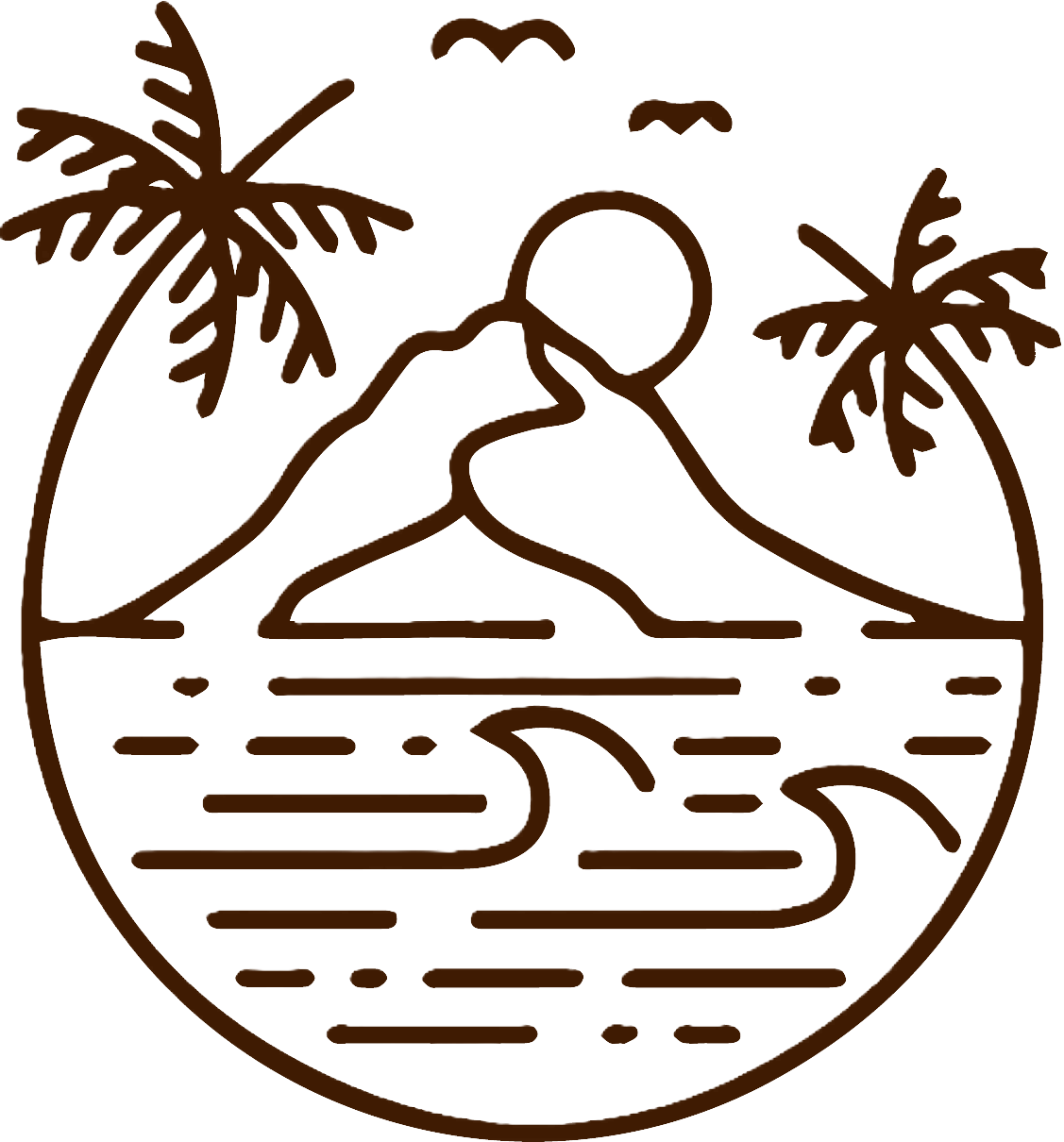Two backpacks were walking down the dusty road of the arrivals hall in Windhoek International Airport, Namibia. Despite lacking legs or feet, they moved with purpose. The new adventure, called camping in Namibia is awaiting. 😊 😊 😊
Day 1: ‘Welcome to Windhoek’ greeted the backpacks each other. The capital city of Namibia is a vibrant mix of indigenous Namibian tribes and German colonial settlers. It is also the perfect spot to start the 10 days adventure through the vast Namibian country. Having a one-day rest before the intense schedule begins, has proven a good method and it gives you time to gather your strength to explore further. Checking in at the centrally located Avani Hotel is a clever way to explore the city by foot. It gave us the chance to visit the most famous landmark in Windhoek, the “Christuskirche” (Christ Church) and the Craft Market on Independence Ave., which was relatively small and for sure you can buy the same produce cheaper during your trip around the country.
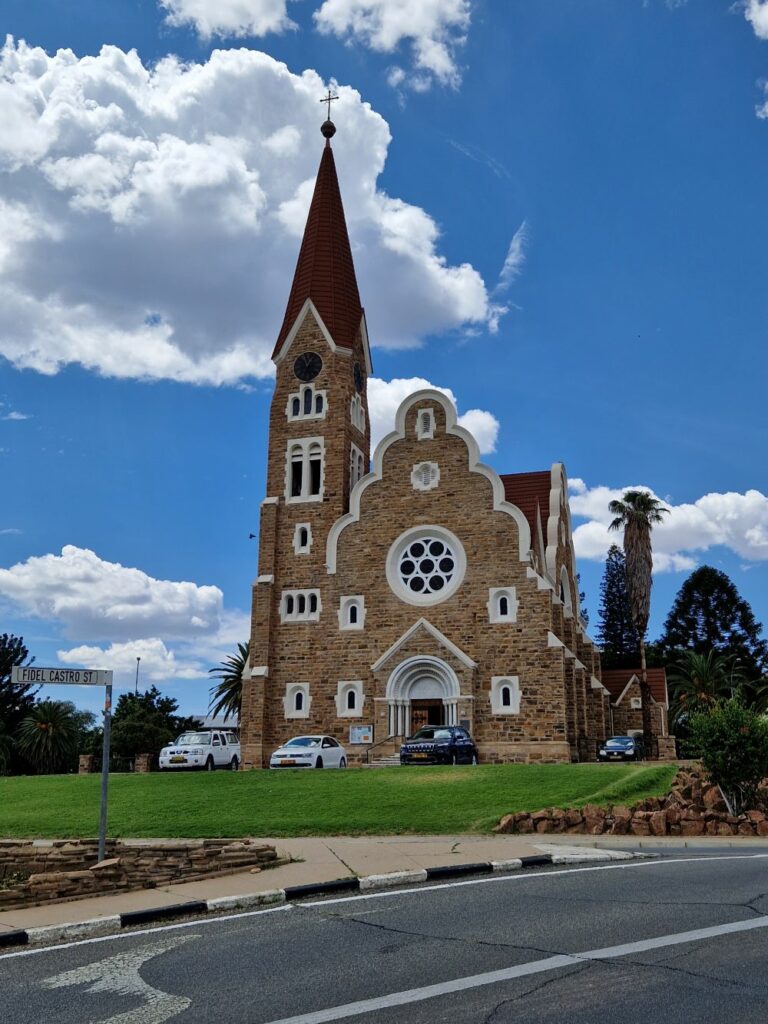
The next morning, we started the day with a car pickup at Asco CAR . We had booked a 4×4 vehicle with a tent on the roof, so we could immerse ourselves in nature. The plan for the day included a long ride from Windhoek to Sesriem Campsite – NWR, where we were going to stay 2 nights. After a proper shopping for food and beverages and a final check of the tire pressure, we hit the road. It took us almost 7 hours to get there, since we drove on gravel roads, where the speed limit is max 80 km/h. The only stop on the way was at Solitaire, where we got fuel for the car and Moose’s legendary homemade apple pie for our bellies. The place is a common rest stop for the travelers and offers a selection of old rusty cars.
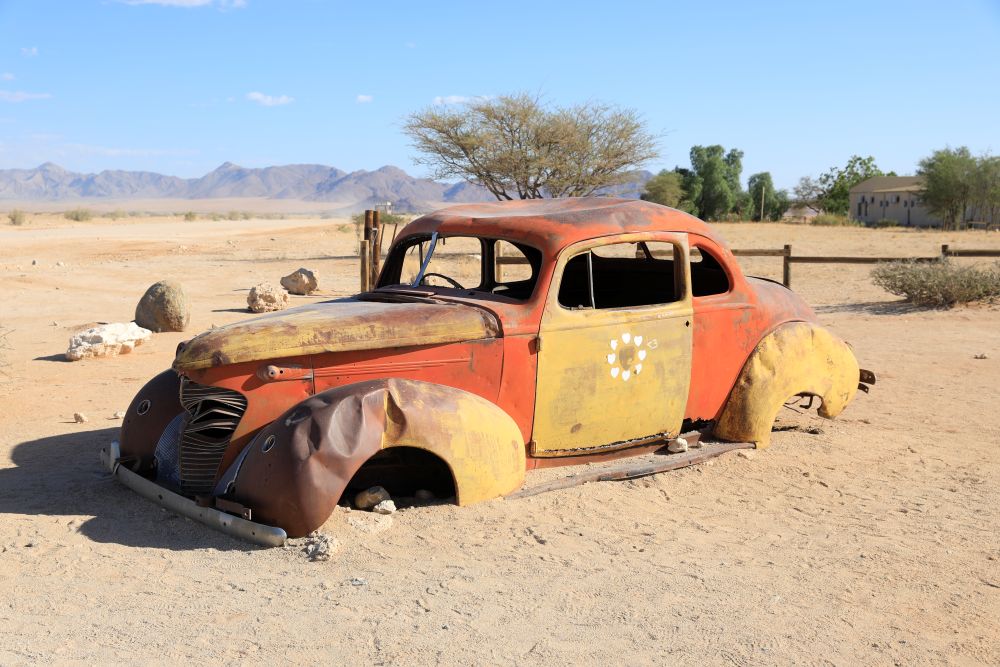
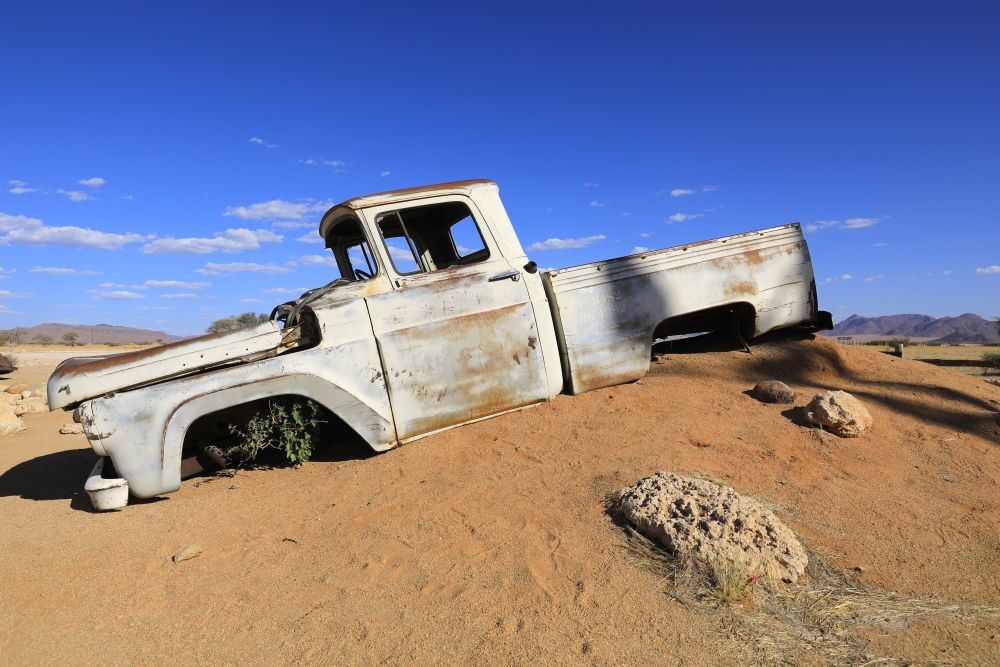
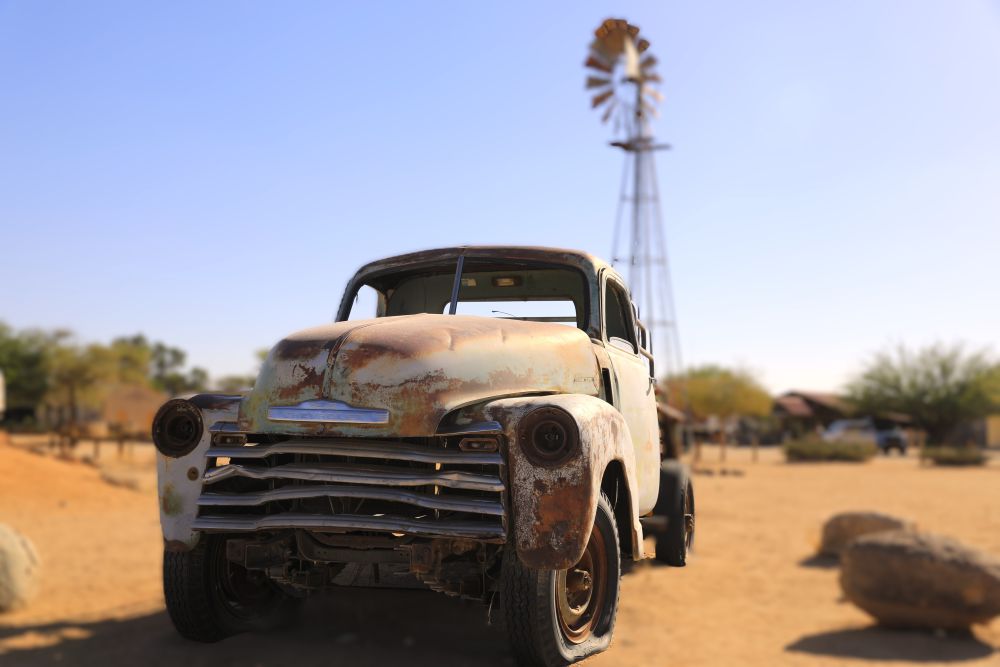
Just before sunset, we arrived at our campsite, where we could set our tent beneath a huge tree. That night, under the vast African sky, we felt both protected and anchored.
Day 2: At 6am in the morning everybody left the camp. Why? Everybody wants to be the first to meet the sunrise at Dune 45, where a breathtaking panorama awaits the morning sun. We were more excited about the Deadvlei though. We came to this part of Namibia to see those trees in the middle of the desert. However, if you go early in the morning, you will not be alone. We took a different approach, we went there shortly before lunch, when everybody had left already. We had this incredible site only for us and the sun. If you could stand the heat and have a lot of water, this could be your alternative to avoid the sunrise marathon. The white clay pan contrasts against the remains of 900-year-old camel thorn trees and this hauntingly beautiful landscape is often described as one of the most photogenic places on Earth. You can see why below 😊
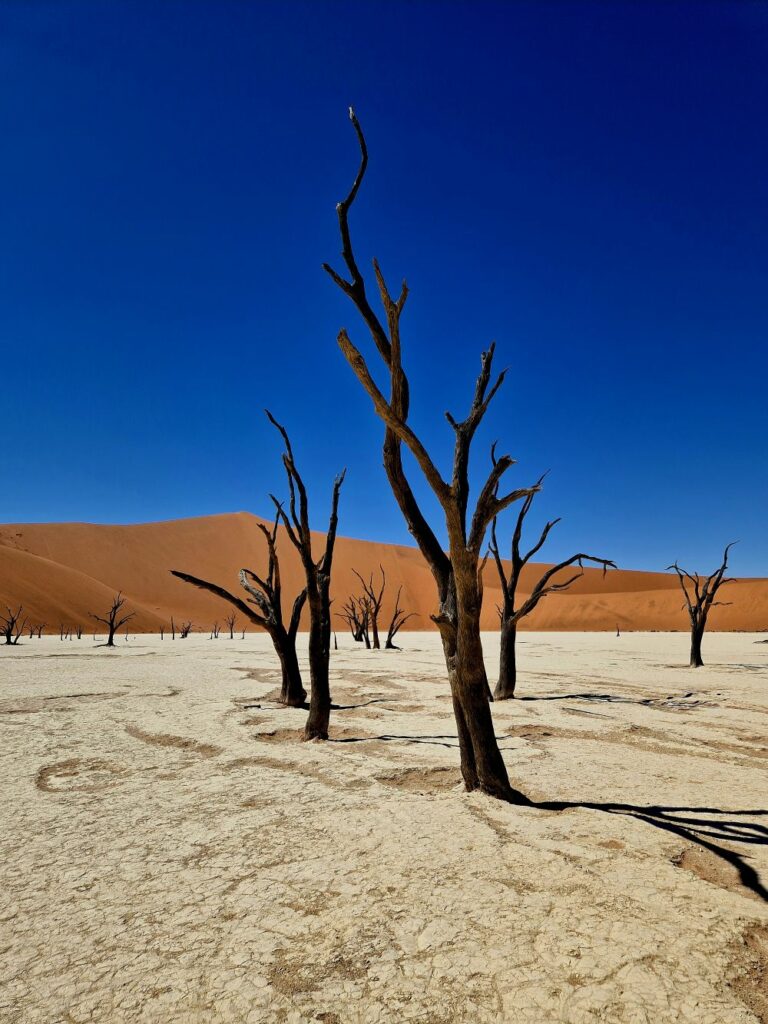
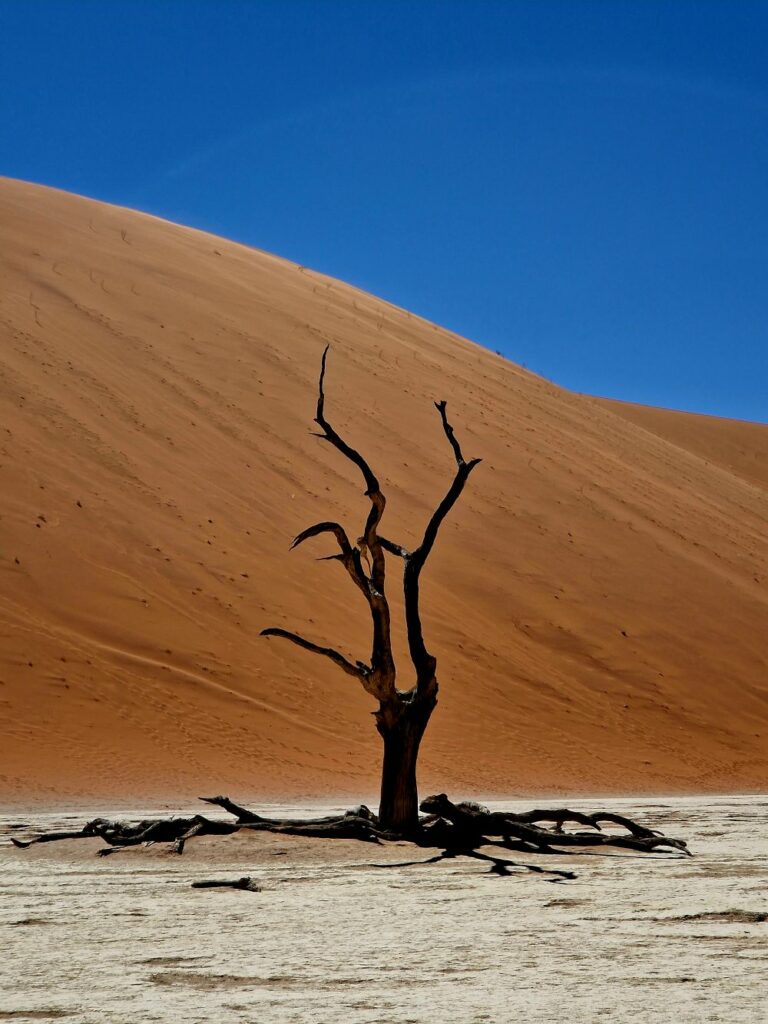
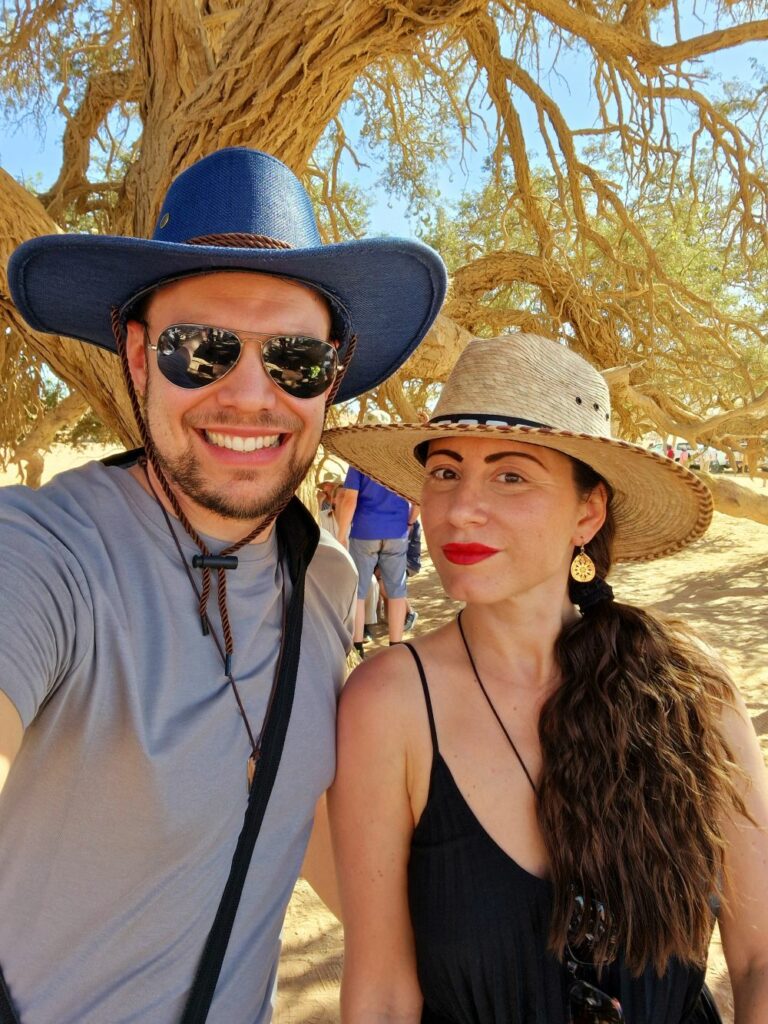
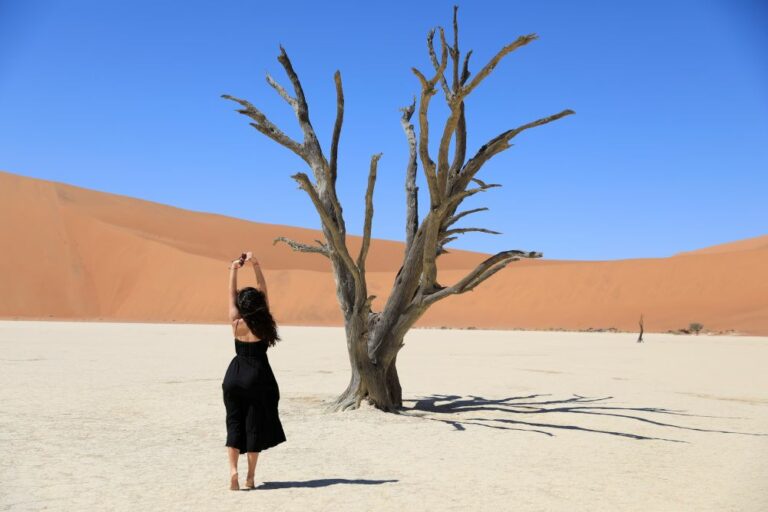
Day 3: We started our journey toward the pristine shores of Walvis Bay. After a long day full of dusty roads and apple pies (YES, we did stop again; don’t judge us, it’s delicious!) we reached the breathtaking spectacle of the flamingos and the mesmerizing Pink Lake in Walvis Bay. After the exhausting drive, there was nothing better than settling down to a meal of renowned oysters. They are plucked fresh from the icy Atlantic waters and are a delicacy fit for a king. We tried them in Anchors Waterfront Restaurant, and we highly recommend it. Another popular activity in the region is Sandwich Harbor, which we did not visit, due to the tight schedule waiting ahead of us.
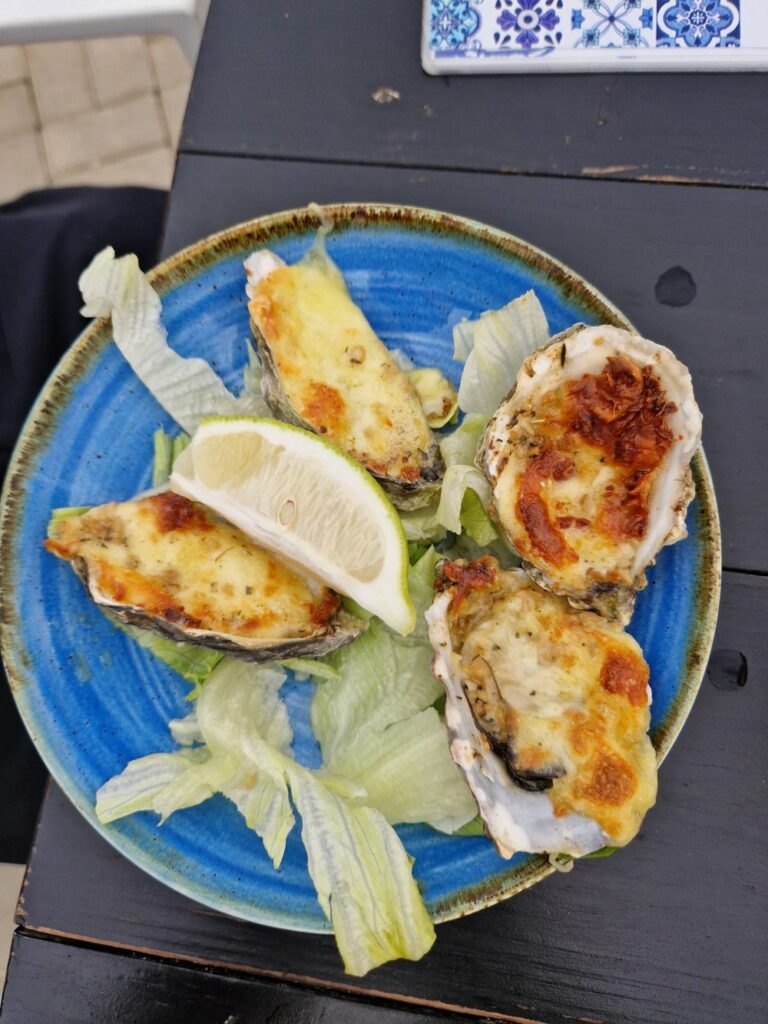
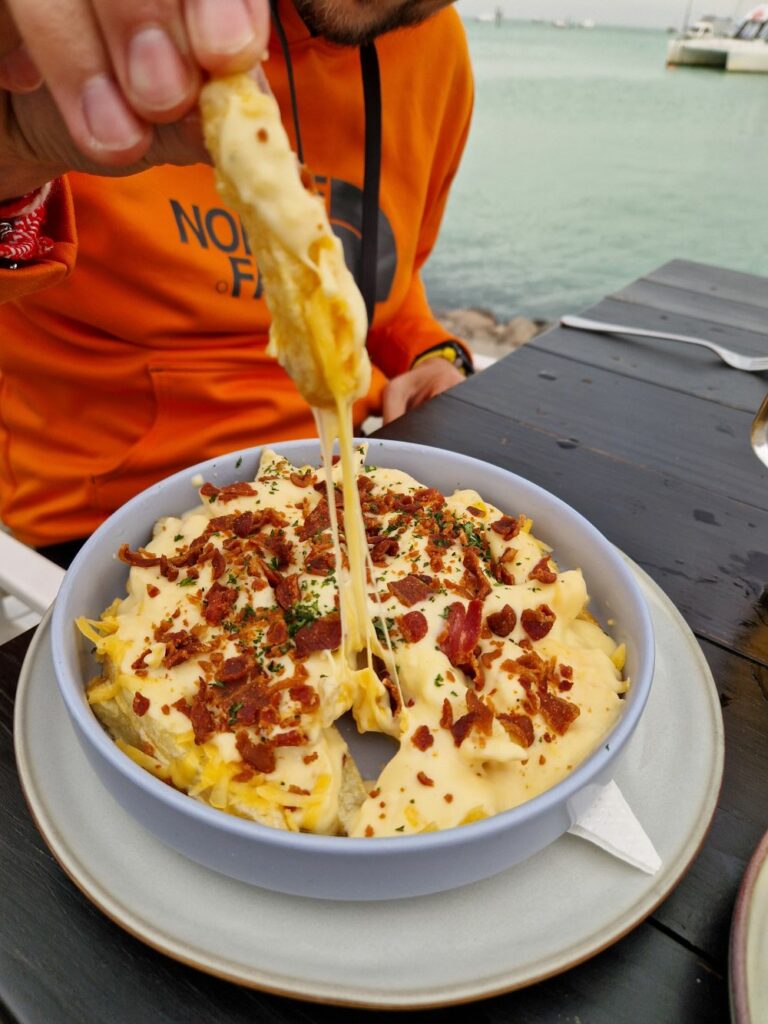
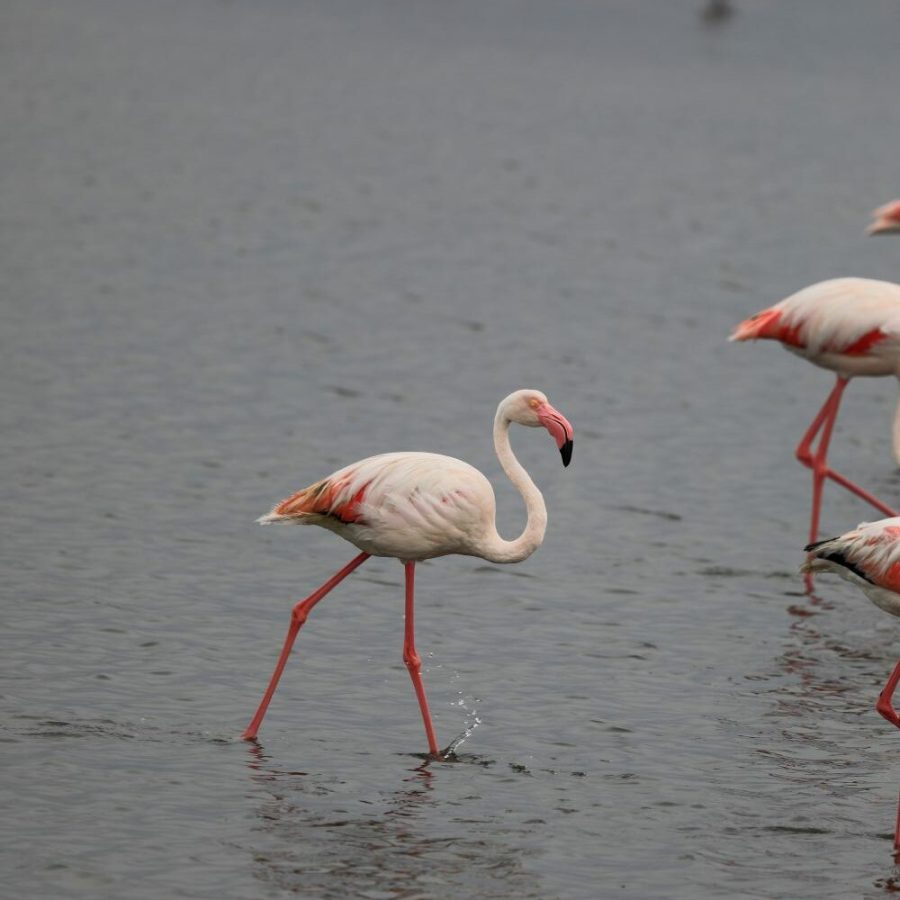
Day 4: After Walvis Bay we made a quick stop at Swakopmund, where our humans enjoyed a cooked meal in a restaurant (Ankerplatz) which included an oryx steak and an oryx pizza. Swakopmund is a vibrant coastal town with a unique blend of German colonial and African influences. The name “Swakopmund” originates from the Nama language, spoken by the indigenous Khoikhoi people of Namibia. “Tsoakhaub” means “river”, while “mond” means “mouth”. Therefore, Swakopmund can be translated to “Mouth of the Swakop River”.
On the way to our camping place, we made a short break at the Zeila Shipwreck, among the Skeleton Coast of Namibia. In 2008, while traveling from Walvis Bay to Angola, the vessel experienced engine failure and ran aground near Henties Bay. It serves as a reminder of the perils faced by sailors navigating the dangerous waters of Namibian coast.
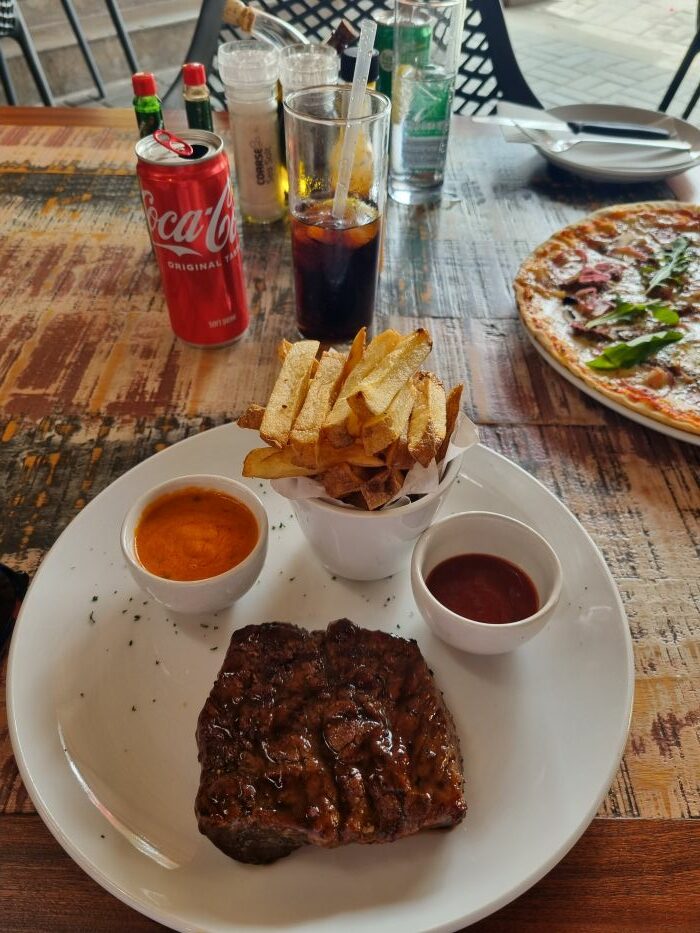
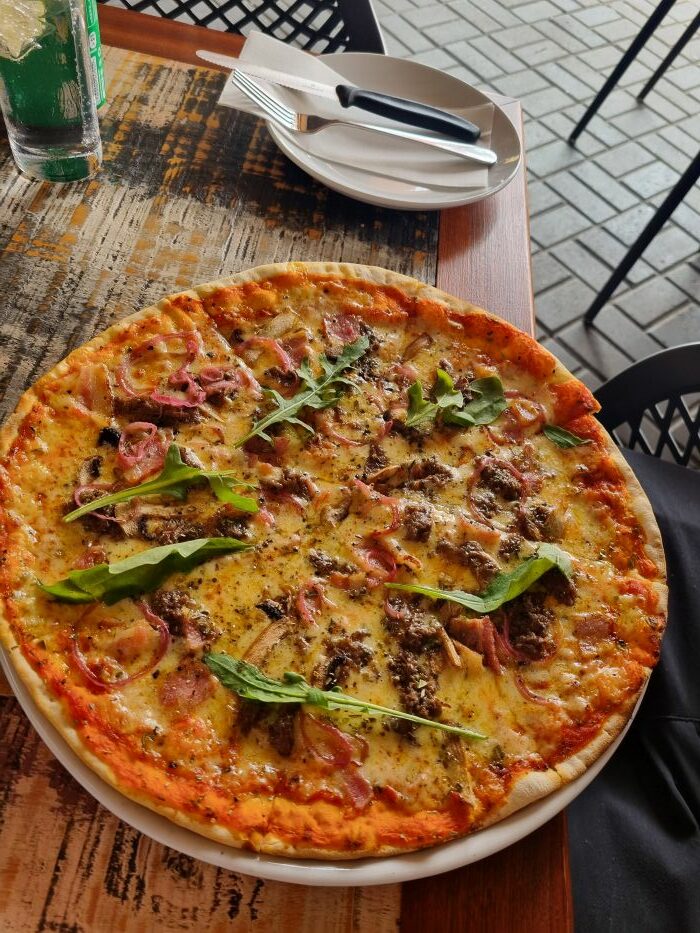
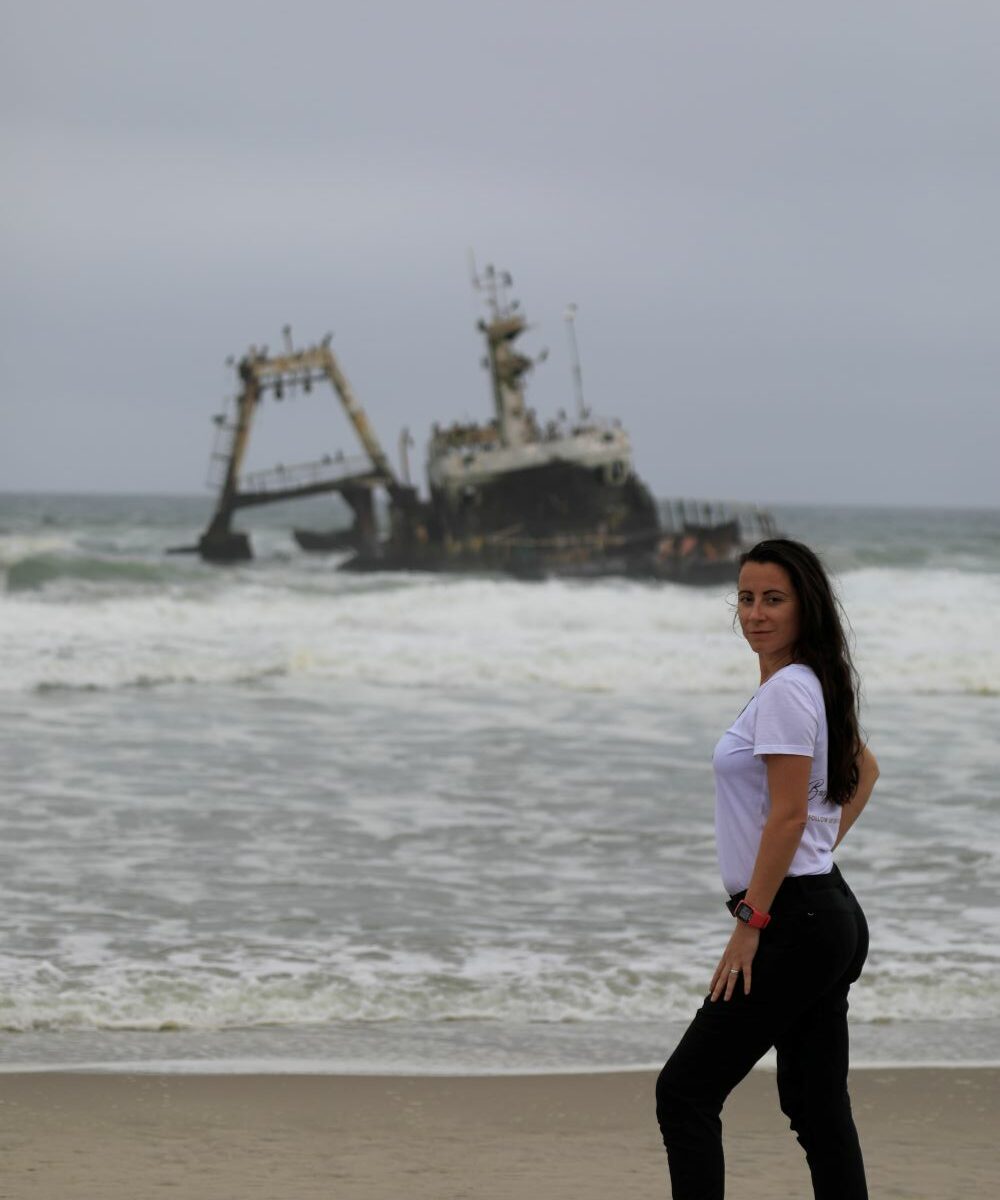
Day 5: We started early, and we drove to Damaraland. Our goal was to meet the indigenous Himba people, whose way of life has remained unchanged for centuries. The Damara language, also known as Khoekhoe language, is a complex system of click consonants and sounds very strange to us Europeans.
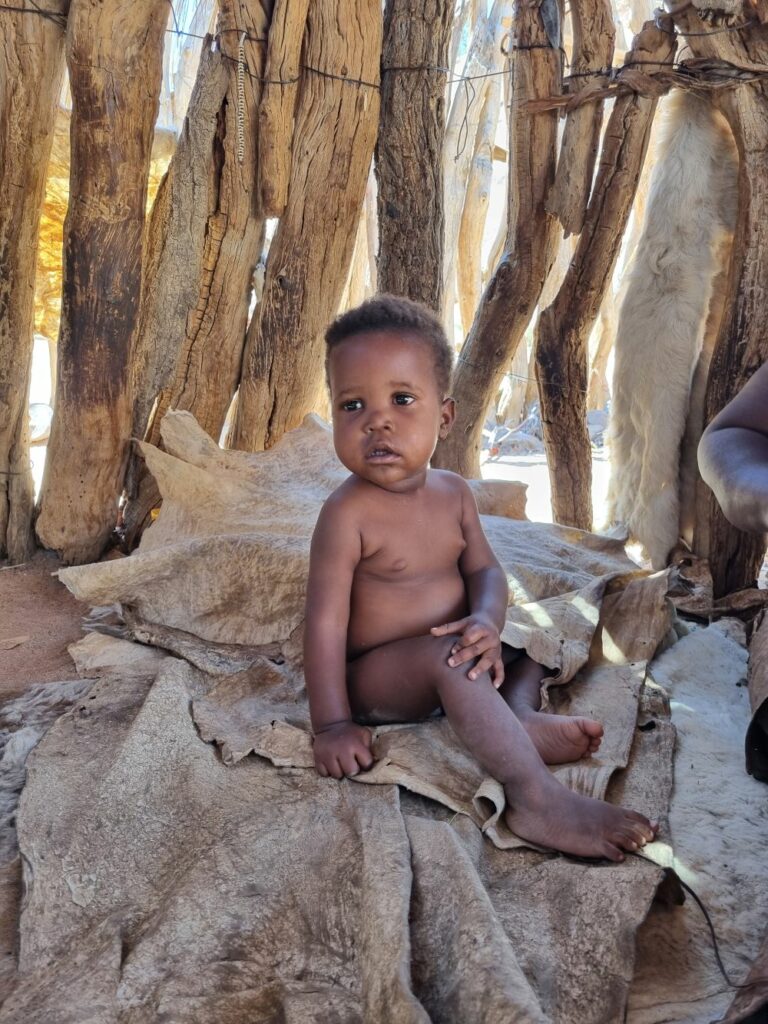
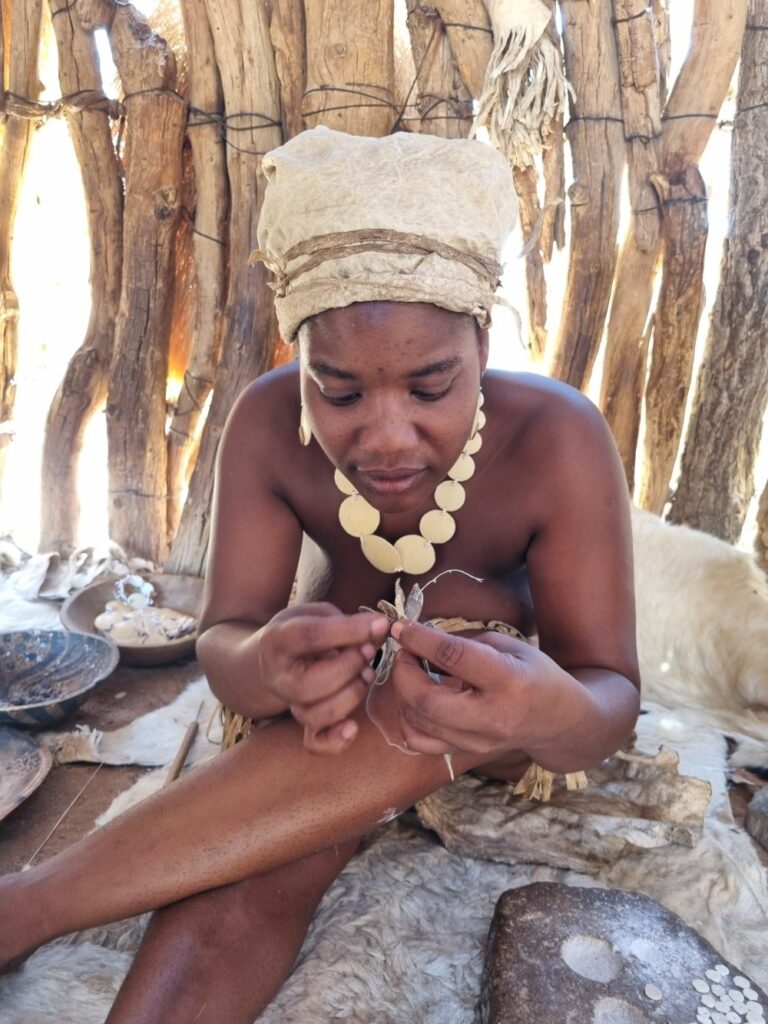
Day 6-7: After a good night’s rest and full of energy we headed off to Etosha National Park. With its abundant wildlife, stunning landscapes, and unparalleled safari experiences, Etosha National Park promises an adventure of a lifetime for nature lovers and safari enthusiasts alike. We stayed overnight at Etosha Trading Post Camp, where we were close enough to Anderson’s gate and could start our exploration very early in the morning. We barely passed the gate, and the wildlife was on complete display, right next to the main road. Naturally the wild animals congregate around waterholes, making for excellent game viewing opportunities. We stayed half a day at the ‘Mirador de Olifantsbad’ waterhole, where we were 1 meter away of a huge elephant going to enjoy the waterhole.
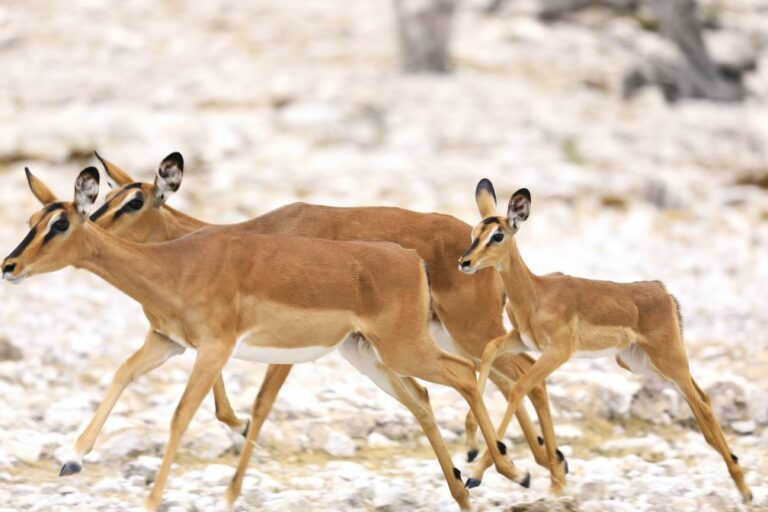
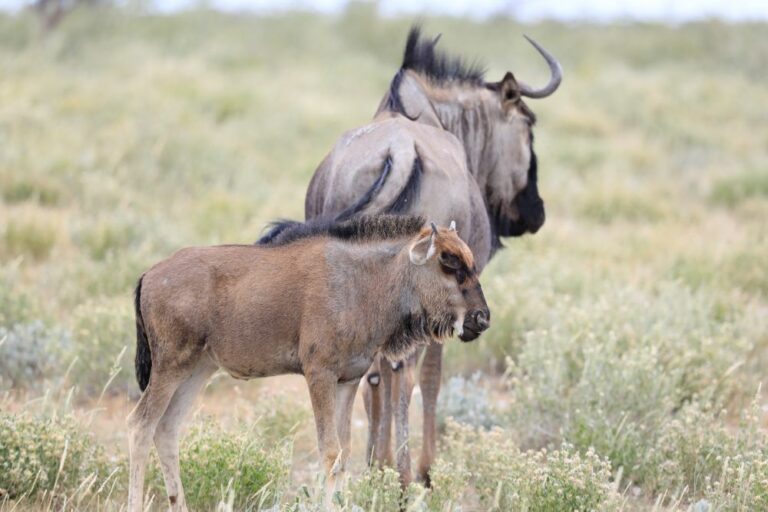
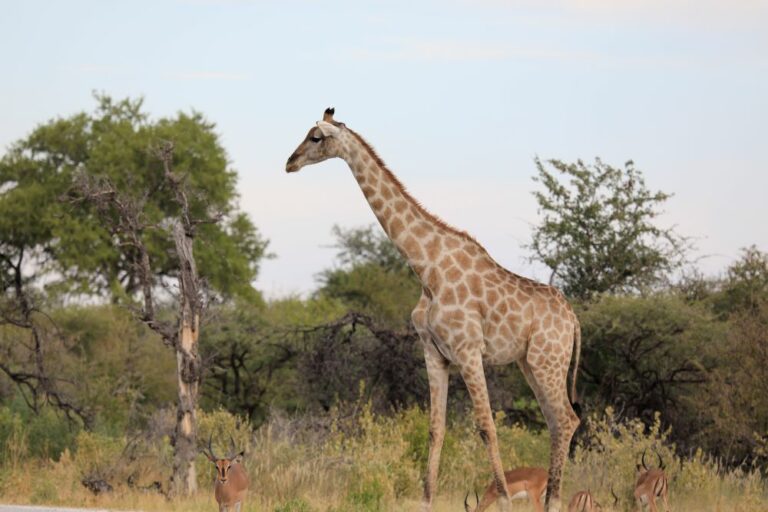

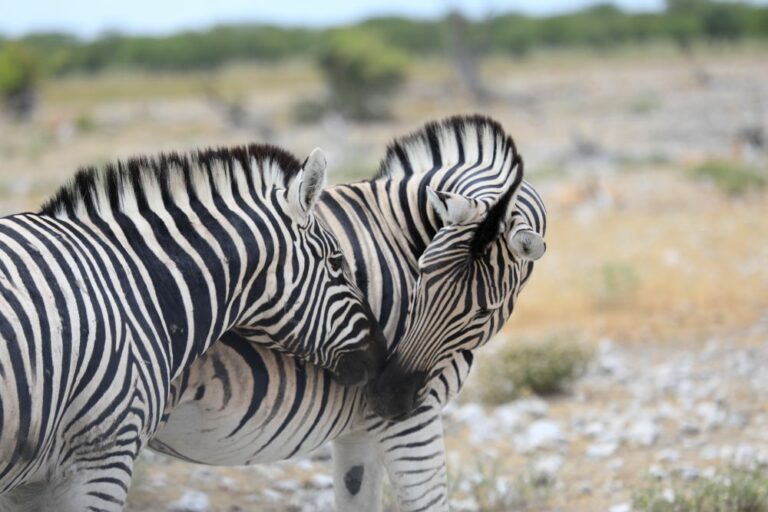
Some of the most popular waterholes include Okaukuejo, Halali, and Namutoni. Please do not forget to look for the 2-legged friends, the birds. Etosha is a birdwatcher’s paradise, with over 340 bird species recorded within the park. From majestic raptors to colorful bee-eaters and ostriches, there’s plenty to see for bird enthusiasts.
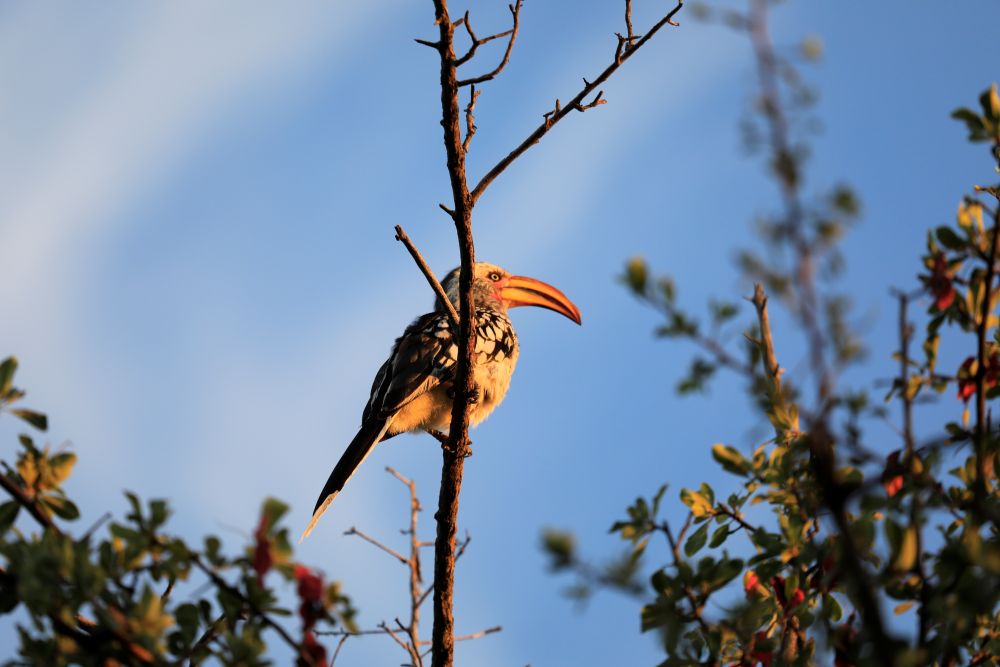
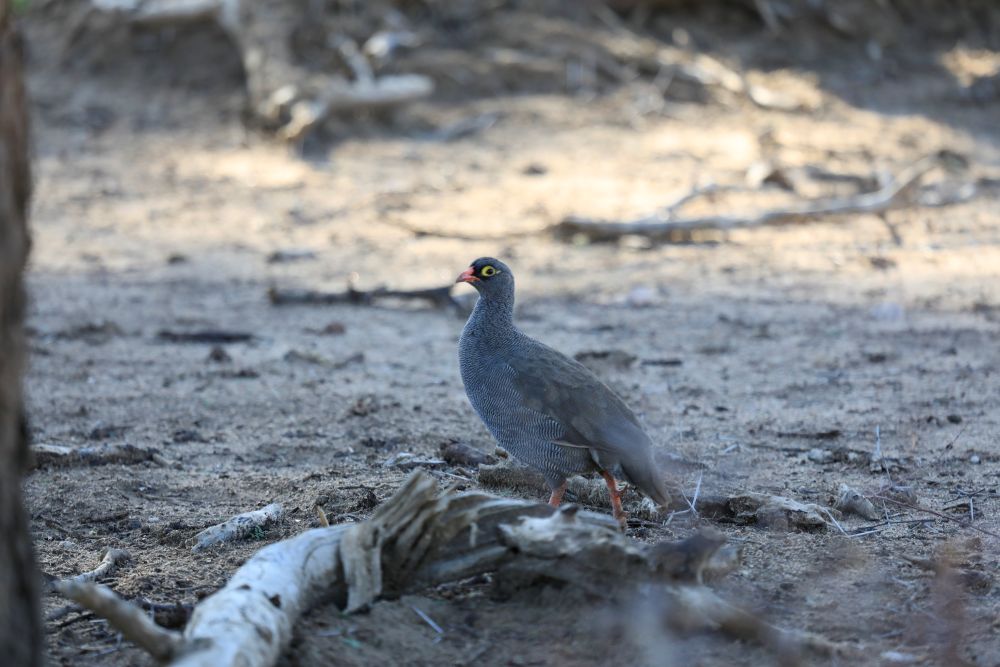
If you drive from waterhole to waterhole, at some point you will need a ‘pipi -break’, this could be done at Halali. It is more or less in the middle of the park and offers clean public toilets. 😉 Keep in mind that the speed limit is 60km/h within the park and the chance is that you will stay until the late afternoon, so keep an eye to the opening hours too.
The camp, where we chose to rest was right next to the exit of Etosha (Namutoni Gate). It is called Onguma Tamboti Campsite. It offers everything one adventurer needs, plus delicious cocktails on the terrace, with a view to a waterhole. Private Game drives are some of the activities you could book there, otherwise just enjoy their swimming pool 😉
Day 8: With a sense of anticipation, we began our final adventure: a leopard safari in Okonjima Nature Reserve. The search did not take long. Soon enough we met a pair of leopard cubs, with their spotted coats, shimmering in the sunlight. They were patiently awaiting their mother’s return from the hunt. Our guide John M. was very resourceful and experienced; thanks to him, we witnessed this extraordinary moment.
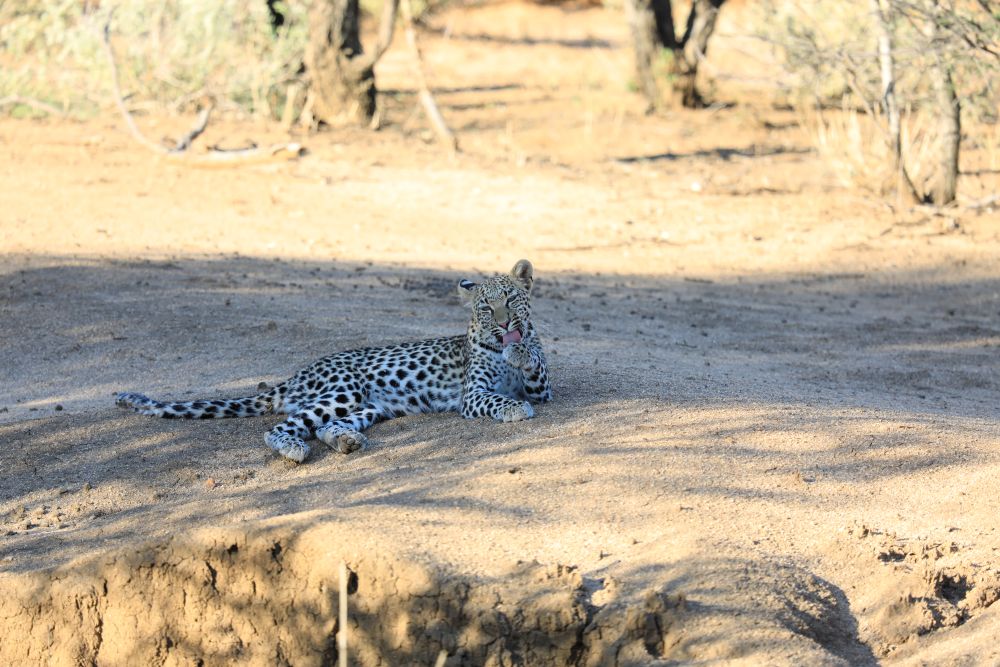
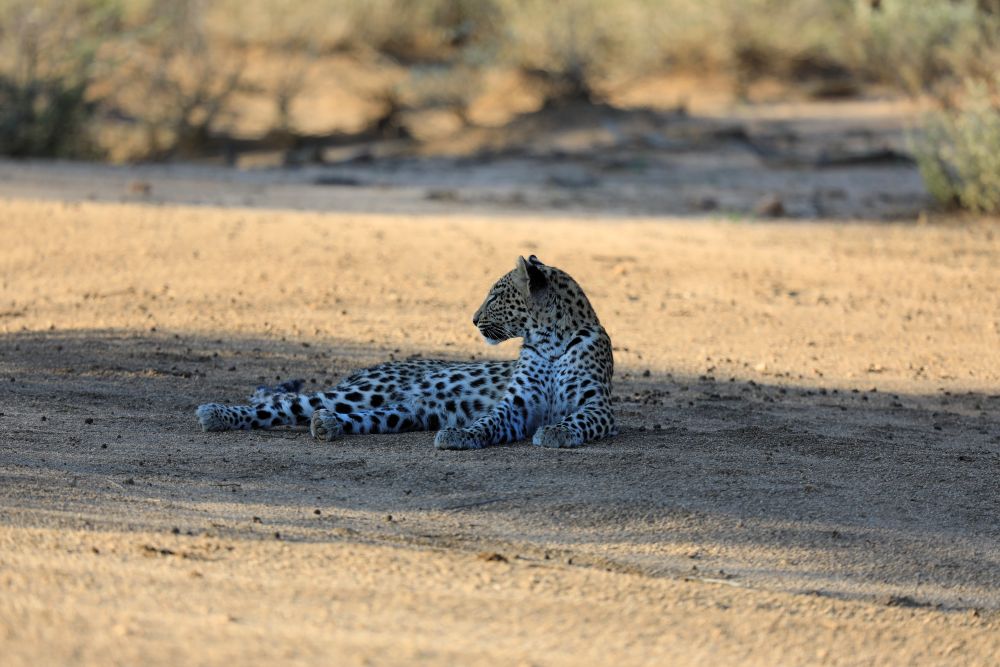
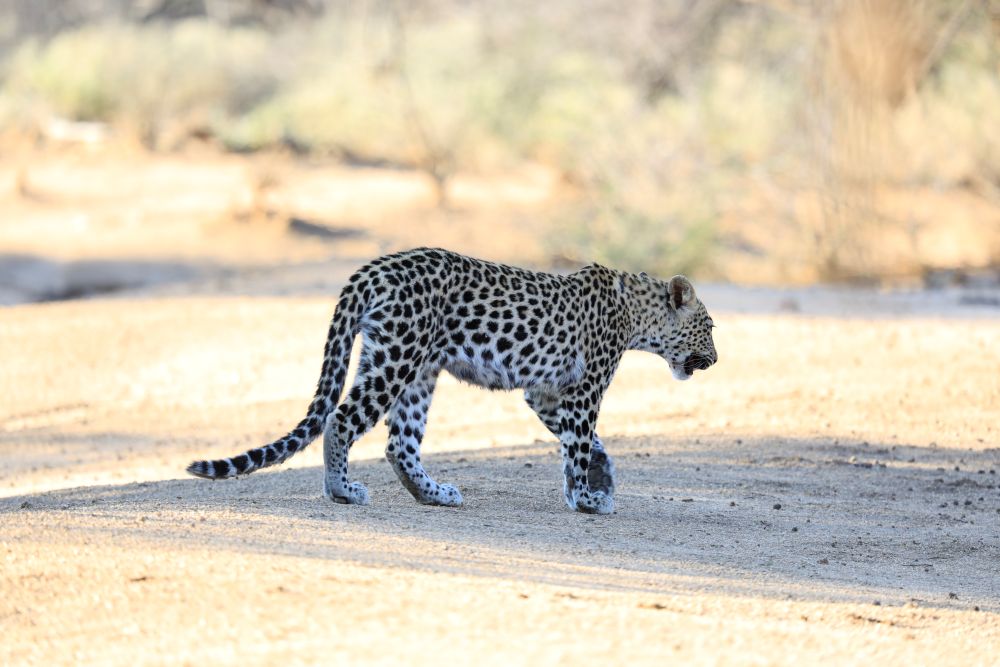
After we took an insane number of photos of the leopard cubs, we drove deeper into the bush. We were lost according to the humans, but John M looked determined. Suddenly we heard loud noises, which we could not immediately apprehend. Next, we spotted the amber eyes of two brown hyenas, boldly challenging the leopard for its catch. How could we be that lucky to witness all this was all we could think of at that moment.
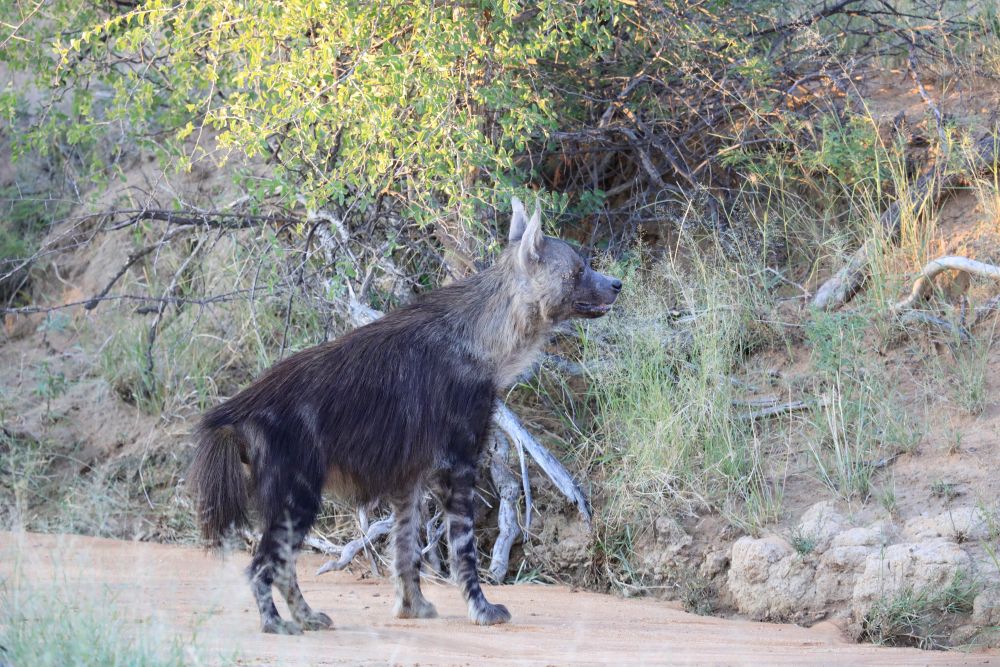
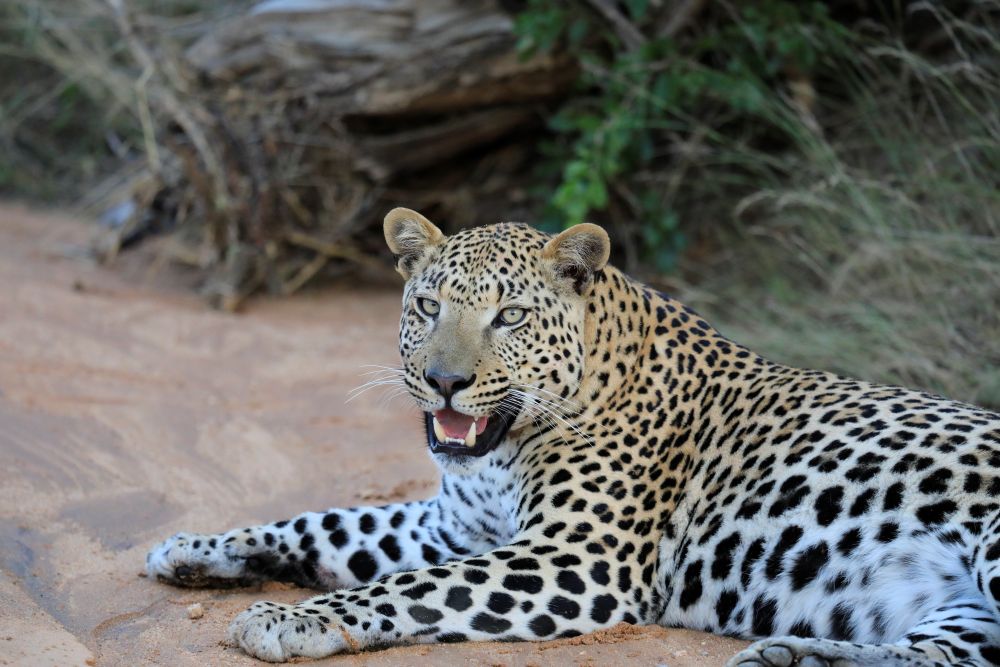
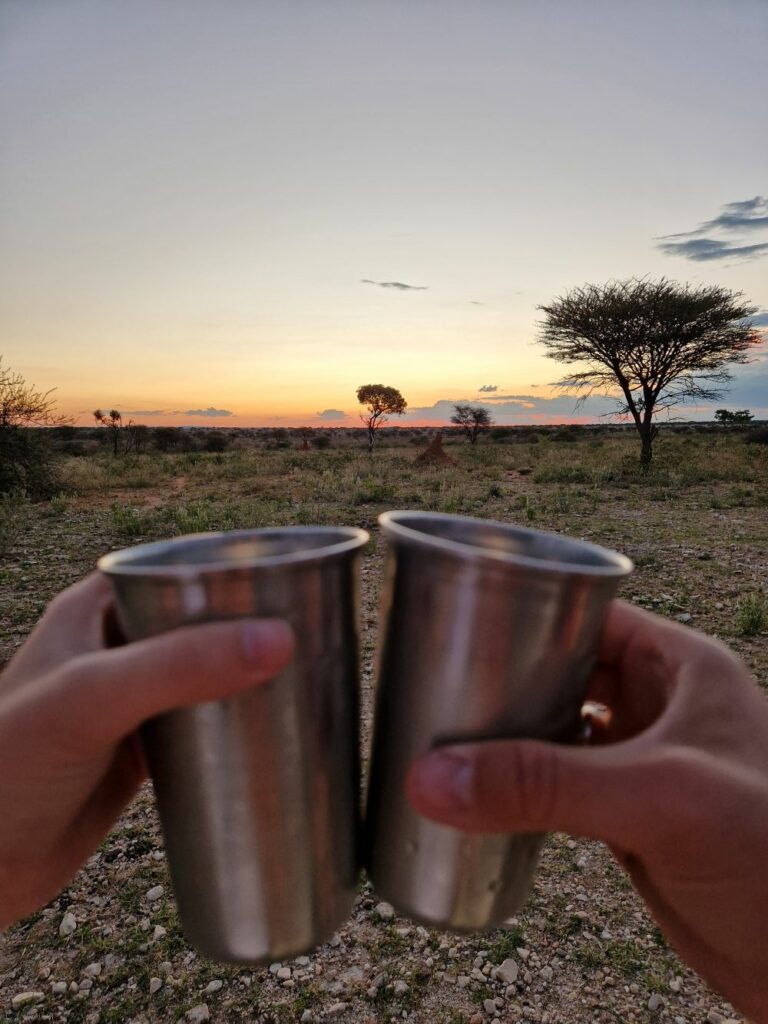
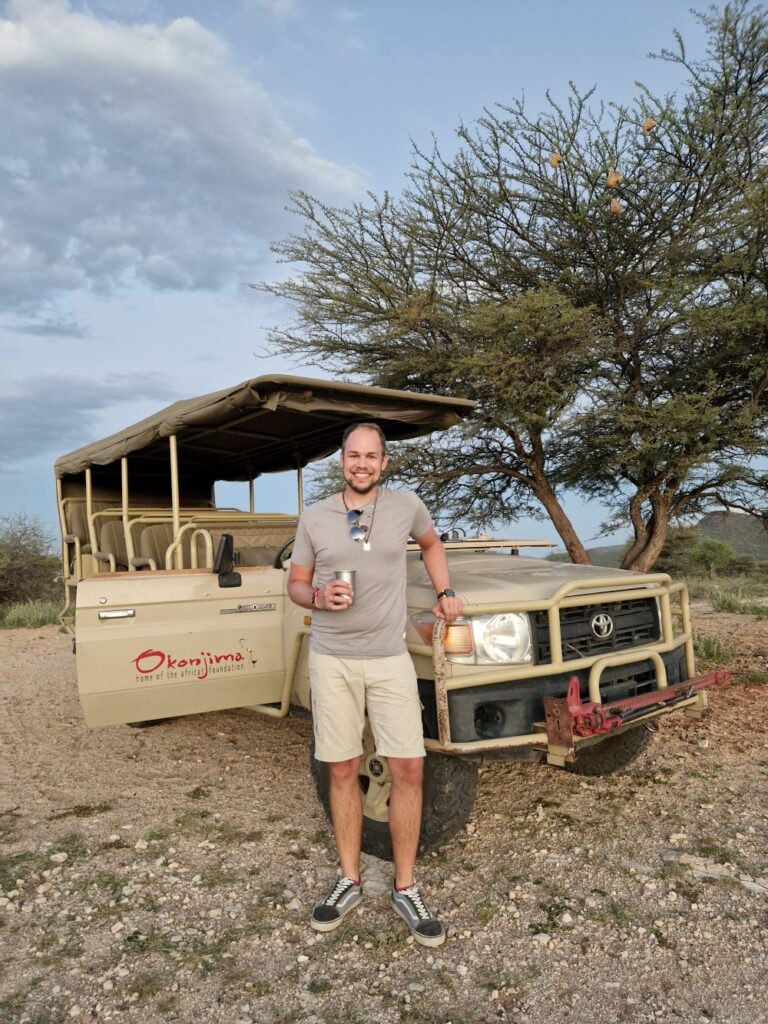
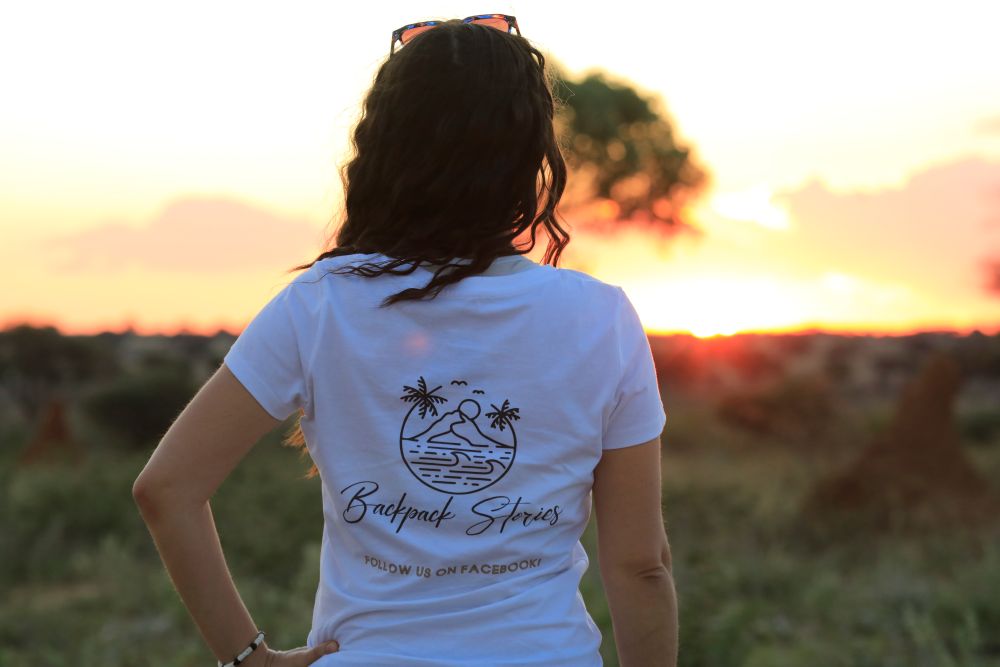
Just when we thought the day had reached its end, nature had one final surprise in store for us. After an amazing 3-course dinner we went for a night Game drive. The thrill reached new heights as we encountered a porcupine family, having their own dinner. As we watched them disappear into the shadows, our hearts soared with gratitude for the privilege of bearing witness to such a rare and magical sight.
Day 9: In the next morning, we reluctantly acknowledged that our time in this wild paradise had come to an end.
Bye Africa, we will see each other again!!!
Your N. Back & P. Pack
Secrets revealed:
- We had an amazing time, which included a lot of driving on gravel roads, so choosing a quality car is essential to avoid broken tires and other problems. We booked with Asco Car Hire and we highly recommend them, the service was just perfect.
- Etosha is a big park, and one day is definitely not enough to enjoy the wild animals. So, if you can plan more time in the park, better do it.
- Our whole trip is in the map below, so you could see also the camps we booked and the kilometers we drove every day: GOOGLE MAPS
- Camping in Namibia is safe, and we really enjoyed it. Just make sure you book a camp with electricity and if possible, with a water hole or swimming pool to enjoy and relax at the end of the day.
